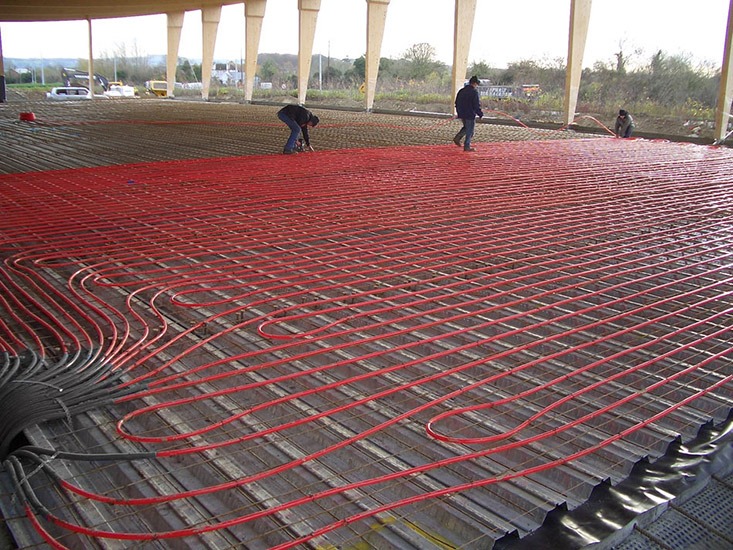Underfloor Heating system
- Home
- Solutions
- MEP Solutions
- Underfloor Heating system

The underfloor heating system is considered one of the most efficient, eco-friendly ways of heating.
It’s a great addition to any renovation or expansion in your any house or business palace.
Once the installation of the system is done, the system will work without any extra effort.
The system is installed beneath or within your flooring turning it into a built-in radiator to warm-up rooms, bathroom floors or any other space.
The size of the room and level of insulation can affect the kind of system to install. Other factors that contribute to choosing the right system are the type of flooring below and whether it is insulated or not.
Types of Underfloor Heating system
There are 4 main types of underfloor heating solutions:
- Mini-Underfloor heating mats
- Under wood, carpet or vinyl foil heating mats
- Underfloor loose wire systems
- In screed heating systems
Benefits of Underfloor Heating system
- Even heat distribution around the space, keeping the temperature consistent in every corner.
- More hygienic than most regular heating systems, as the heat comes from the heating mats or wires installed under the floor. Unlike other systems, where the heat is generated through the air coming from radiator vents which may contain dust or other things (such as dust mites) that could cause allergy.
- Reduce potential hazards such as radiator unit burns or cuts due to sharp edges. Also, it helps in reducing the risk of slippery surfaces in the bathroom through drying the floors quicker due to heat impact.
- Space saving, as it’s installed hidden beneath the floor with no over floor units, making it easier to design your space.
- Installing the suitable sized system can warm up bigger spaces than other heating solutions in the market.
- Can be installed under any floor construction and finish, whether it’s stone, tile, wood or carpeted floors.
- Increase space selling price, as it attracts buyers searching for a luxurious property with smart solution systems.
- Can still warm up your floor even when windows are open, allowing more air circulation in the room.
- Lowers operating cost and saves energy in comparison with regular radiator systems; as it works at lower temperature by around 15°C.
- The system doesn’t make any sound, making the place quieter.

Other alternatives in the market
- Geothermal Heat Pumps
- Pellet Stoves
- Hybrid Furnaces
- Heat pumps
- Biomass boiler
- Solar thermal panels
What makes the under-floor heating system different than other options available?
The under-floor heating system warms up the room from floor-up, pushing hot air up until it cools down then back to the floor to be warmed again in a circular motion, distributing heat evenly and gently.
The air circulation helps in warming up the whole room, so you won’t have any cold spots.
Size
The underfloor heating system comes in many sizes to suit different spaces. Choosing the right system depends on the size of the area you want to heat.
Space consumption
As the system is installed under the floor, it doesn’t consume any room space. Whether it relays on pipework or heating mats, heating parts are concealed under your flooring.
In the case of underfloor heating pipes that use hot water as a heating element, you will need a place to put your boiler, preferably under the house.

How they work
Underfloor heating systems can use electricity or water to generate heat.
Electrical options use a network of wires under your floor. Options include loose-fit wiring, cables or ready-made electric mats.
The hydraulic option depends on a number of pipes linked to a central boiler that heats water and pumps it through the pipes installed under the floor.
Maintenance
Underfloor heating systems don’t need routine maintenance, it’s installed under the floor once and you can forget about it.
On the other hand, an annual check for the control system is preferable.
